Country guides

Things to do in Italy
Littered with more than 3,000 years of history, Italy is a sightseer's paradise. Visitors can spend some time in Rome taking in famous sites such as the Colosseum, the Trevi Fountain and the Spanish Steps, as well as the Pantheon. With artworks on display from the likes of Da Vinci, Caravaggio and Botticelli, it's a visual buffet of the highest order.
Those who head north can indulge in the wonderful shopping in the fashion capital of Milan. A little further south is the magical city of Florence, which teems with culture and Italian flair. Continuing south past Rome, Naples is graced with the ruins of Pompeii and Herculaneum, both of which were destroyed by the eruption of Mount Vesuvius. The active volcano can be seen standing sentinel over the city.
Italy takes a lifetime to explore properly because there is so much on offer for visitors. From the gondola-lined canals of Venice and the white sandy beaches of San Remo to the iconic Alps, Dolomites and Apennines, Italy has everything from beach holidays to luxury mountain ski resorts and a whole lot more in between.
The most popular time of year to visit Italy is during the summer months when most of the country can be enjoyed slowly like a fine Italian vintage. A trip to the rolling hills of Tuscany is a must to sample some fine wine and olive oil, as well as plenty of old Italian cuisine, while taking in the scenery of cypress trees, lush vines and olive groves. The more adventurous travellers can head to the Italian Alps and visit the resorts of Courmayer and Brevil Cervinia for some world-class skiing.
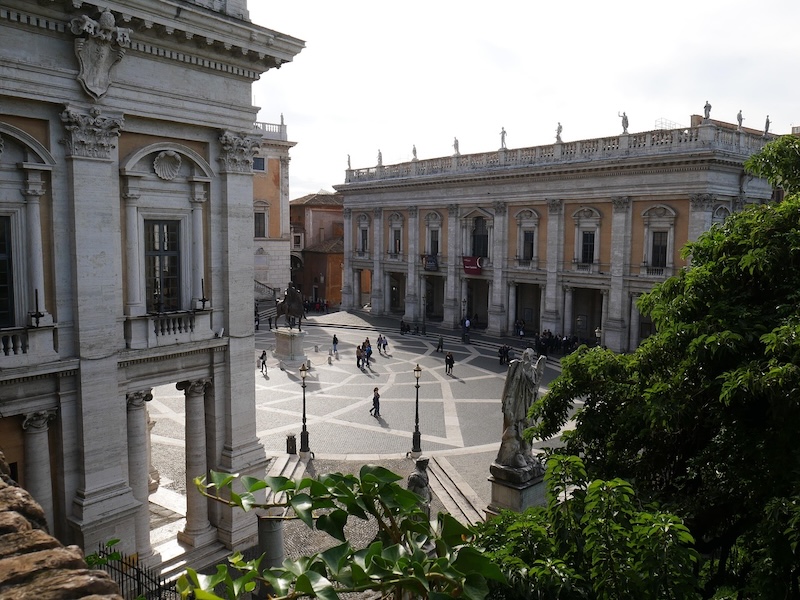
Capitoline Hill
Capitoline Hill was the original capital of Ancient Rome. Once housing the Senate, it's the smallest but also the most famous of the Seven Hills. The main feature of the area is Mi…
Capitoline Hill
Capitoline Hill was the original capital of Ancient Rome. Once housing the Senate, it's the smallest but also the most famous of the Seven Hills. The main feature of the area is Michelangelo's Piazza del Campidoglio, which is bordered by the Palazzo dei Conservatori and the twin structures of the Palazzo dei Senatori and Palazzo Nuovo. Boasting the largest collection of classical sculptures, notable statues include The Dying Gaul, the Resting Satyr and The Capitoline Wolf. Paths cut along the side of the hill from the Campidoglio allow visitors to enjoy breathtaking panoramic views of the Forum and Colosseum, with the Hill giving an overawing sense of the Roman Empire's peak glory.
Address Piazza del Campidoglio, Rome
Website www.museicapitolini.org
Opens Museums are open Tuesday to Sunday, from 9am to 8pm. Closed 1 January, 1 May, and 25 December.
Admission
€15 (adults) for access to all the museums, with concessions available.
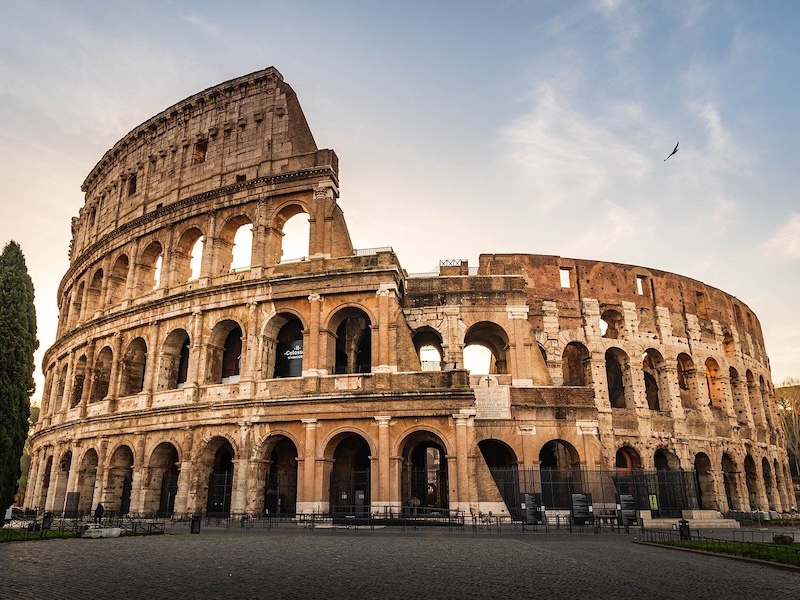
The Colosseum
Known to be one of the most impressive buildings of the Roman Empire, the Colosseum was the largest structure of its era. Once holding crowds of 55,000 spectators entering via 80 e…
The Colosseum
Known to be one of the most impressive buildings of the Roman Empire, the Colosseum was the largest structure of its era. Once holding crowds of 55,000 spectators entering via 80 entrances, this enduring symbol of ancient Rome tenaciously clings to its foundations as the site of former gladiatorial conquests and brutal public entertainment. Its architecture boasts an impressive array of Doric, Ionic and Corinthian columns and an underground network of cells, corridors and elevators used to transport animals from their cages to the arena. The magnificence of the original structure has been eroded through the years by pillaging and earthquakes so that only a skeletal framework remains, but it remains truly unforgettable and awe-inspiring.
Address Piazza del Colosseo
Website www.the-colosseum.net/around/visit.htm
Opens 9am to 6.15pm in summer, and from 9am to 4.30pm in winter.
Admission
€12 (adults); €7 (reduced fee)
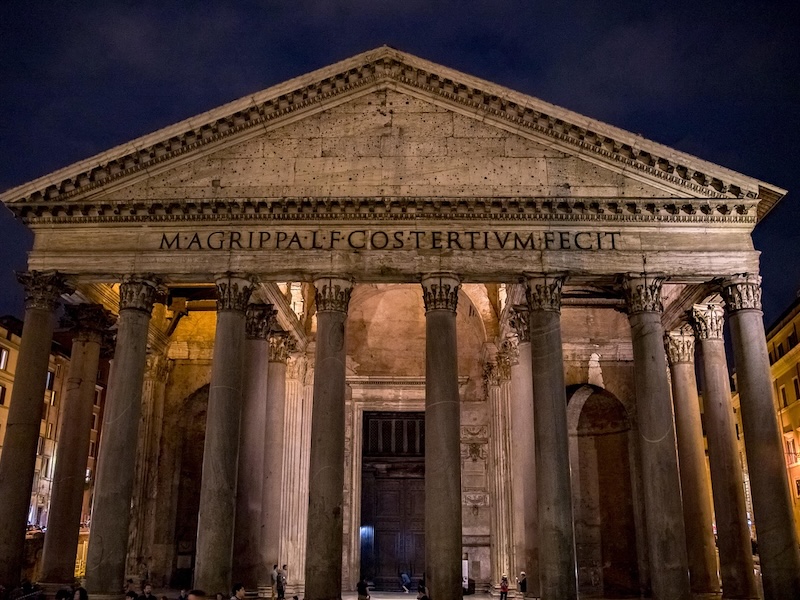
Pantheon
The Pantheon is one of the world's most inspiring architectural designs. Almost two thousand years after it was built, the Pantheon's is still the world's largest unreinforced conc…
Pantheon
The Pantheon is one of the world's most inspiring architectural designs. Almost two thousand years after it was built, the Pantheon's is still the world's largest unreinforced concrete dome. Built as a temple to the Roman gods by Hadrian in 120 AD, it's perfectly proportioned floating dome rests seductively on sturdy marble columns. The only light source is the central oculus, which was used by the Romans to measure time, and the dates of equinoxes and solstices. The sunlight pouring through the oculus and illuminating the floor in the otherwise dark church is quite a sight. The south transept houses the Carafa Chapel and the tomb of Fra Angelico rests under the left side of the altar.
Address Piazza della Rotonda
Website www.pantheon-rome.com/opening-hours/
Opens Open Monday to Saturday, from 8:30am to 7:30pm; on Sundays from about 9am to 6pm. Closed New Year's Day, 1 May and Christmas Day.
Admission
Free
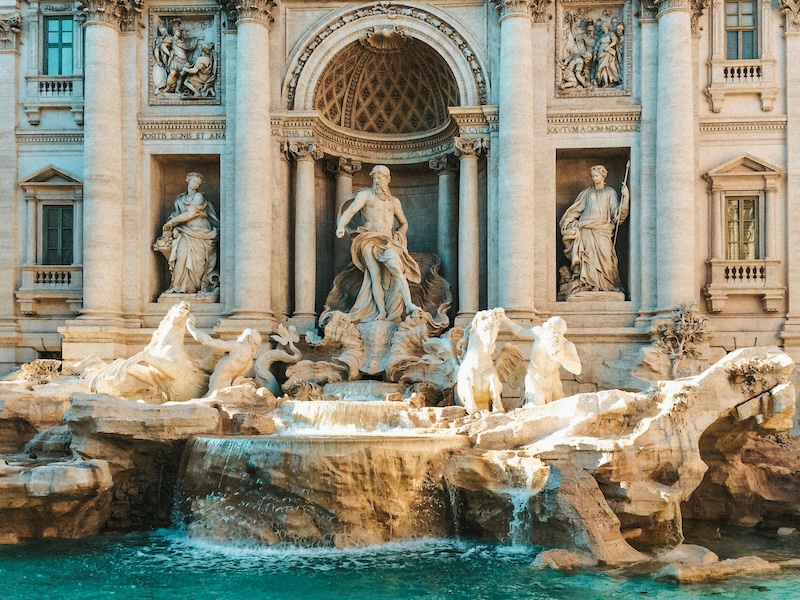
Trevi Fountain (Fontana di Trevi)
The tiny Piazza di Trevi has been immortalised through this fountain built for Pope Clement XII. Arguably the most famous and most beautiful fountain in all of Rome, it's also the …
Trevi Fountain (Fontana di Trevi)
The tiny Piazza di Trevi has been immortalised through this fountain built for Pope Clement XII. Arguably the most famous and most beautiful fountain in all of Rome, it's also the largest Baroque fountain in the city. The fountain marks the terminal point of an ancient aqueduct that supplied Rome for more than four hundred years. Anyone who tosses a coin over their shoulder into the water with their back turned is supposed to guarantee a return trip to Rome. This well-known myth has ensured that thousands of euros are thrown into the fountain every day. The money is used for charitable projects so visitors are at least supporting a good cause.
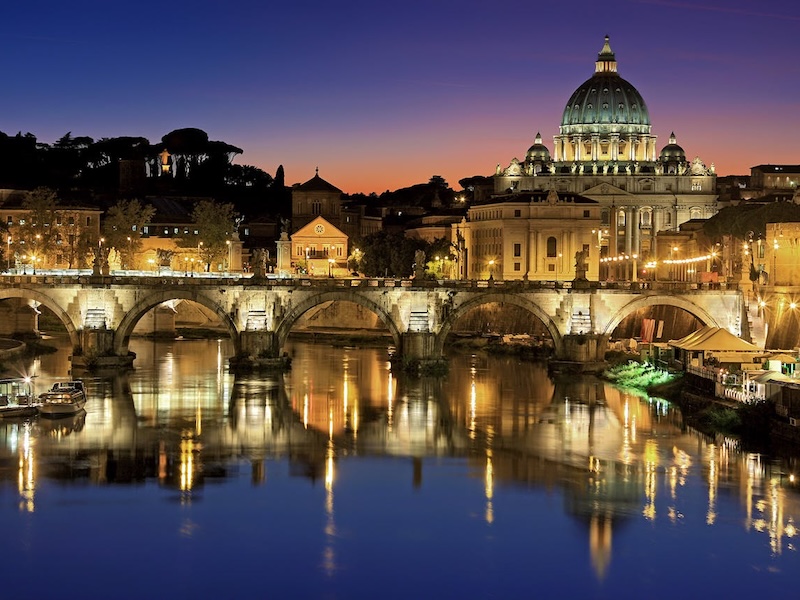
St Peter's Basilica (Basilica di San Pietro)
The Basilica lies above the reputed site of St Peter's tomb, containing notable sculptures including Michelangelo's Pieta. In the central aisle stands Arnolfo da Cambio's bronze st…
St Peter's Basilica (Basilica di San Pietro)
The Basilica lies above the reputed site of St Peter's tomb, containing notable sculptures including Michelangelo's Pieta. In the central aisle stands Arnolfo da Cambio's bronze statue of St Peter, its foot worn down by the constant flow of pilgrims' kisses. Proudly resting above the papal altar is Bernini's Throne of St Peter. The Vatican Grottoes, containing papal tombs, can be reached by steps from the statue of St Longinus. This is the legendary site of St Peter's tomb and advance permission has to be obtained to view it. Tours of the Necropolis, called the Scavi Tour, take about 90 minutes and are fascinating.
Website www.stpetersbasilica.info/contacts.htm
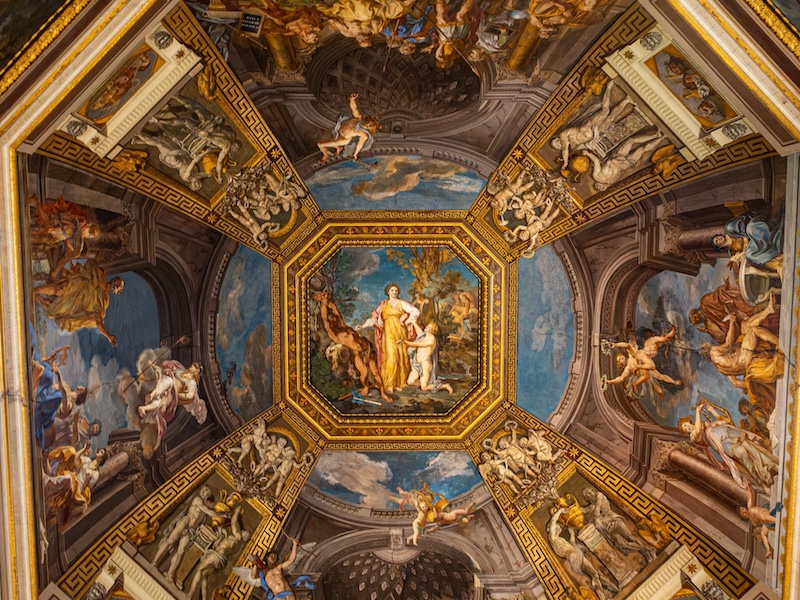
Vatican City and the Sistine Chapel
Scandal has somewhat tarnished the Vatican over the years, but this does not detract from the magnificence of the art collections housed within its buildings or the passion the cit…
Vatican City and the Sistine Chapel
Scandal has somewhat tarnished the Vatican over the years, but this does not detract from the magnificence of the art collections housed within its buildings or the passion the city inspires in the many pilgrims who flock to its holy sites. The Sistine Chapel is known for its famous ceiling painted by Michelangelo which looms above the frescoes on the side walls, while the altar wall is covered by The Last Judgement. The chapel is justified in its fame and leaves travellers breathless; it is a profoundly special place to visit. The Vatican Museums provide access to one of the world's greatest collections of art. The galleries stretch over four miles (6km) and include the magnificent Raphael Rooms, the Etruscan Museum and the Pio-Clementino Museum, boasting the world's largest collection of Classical statues.
Website www.vatican.va
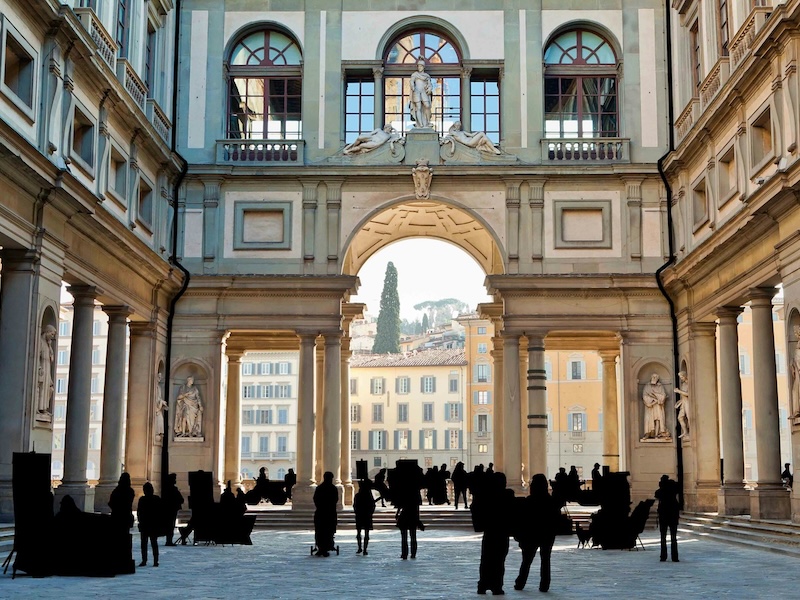
The Uffizi (Gallerie degli Uffizi)
The Uffizi is one of the world's greatest art galleries, with a collection of Renaissance paintings that includes the works of Giotto, Masaccio, Paolo Ucello, Botticelli, Leonardo,…
The Uffizi (Gallerie degli Uffizi)
The Uffizi is one of the world's greatest art galleries, with a collection of Renaissance paintings that includes the works of Giotto, Masaccio, Paolo Ucello, Botticelli, Leonardo, Michelangelo, Titian and Caravaggio. The collection is housed on the top floor of a building designed as the offices of the Medici, commissioned by Duke Cosimo I. From 1581, Cosimo's heirs used the upper storey to display the Medici art treasures. Ancient Greek and Roman sculptures line the inner corridors of the gallery and a series of rooms showcases the chronological development of Florentine art from Gothic to High Renaissance and beyond.
The queues can get frustratingly long so it is best to arrive as early as possible. Ideally, visitors should be there when the museum opens at 8.15am, and avoid peak hours, which are between 10am and 12pm. It takes between three and four hours to properly explore the museum, so visitors should not arrive after 4pm, as they won't have enough time to fully appreciate the place.
Website www.uffizi.it/en/the-uffizi
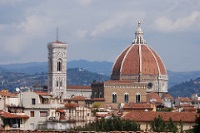
Piazza del Duomo (Cathedral Square)
Florence Cathedral is set in the heart of the city, its most distinctive feature being the enormous dome designed by Filippo Brunelleschi. The Campanile was built according to Giot…
Piazza del Duomo (Cathedral Square)
Florence Cathedral is set in the heart of the city, its most distinctive feature being the enormous dome designed by Filippo Brunelleschi. The Campanile was built according to Giotto's designs in 1334, serving as an elegant prop to Brunelleschi's stout Cathedral. The tower is decorated with two garlands of bas-reliefs, strung around its pink, white and green marble exterior. Above, sculptures by Donatello of the Prophets and Sybils look down upon the city below.
The neighbouring Baptistry is one of Florence's oldest buildings, the gilded brass doors marking Florence's deliverance from the plague. It also contains the machines used in the construction of the cathedral's dome. Other noteworthy artefacts found in the museum include Michelangelo's Pieta and Donatello's Magdalene. In the anteroom are Andrea Pisano's panels from the first few levels of the bell tower.
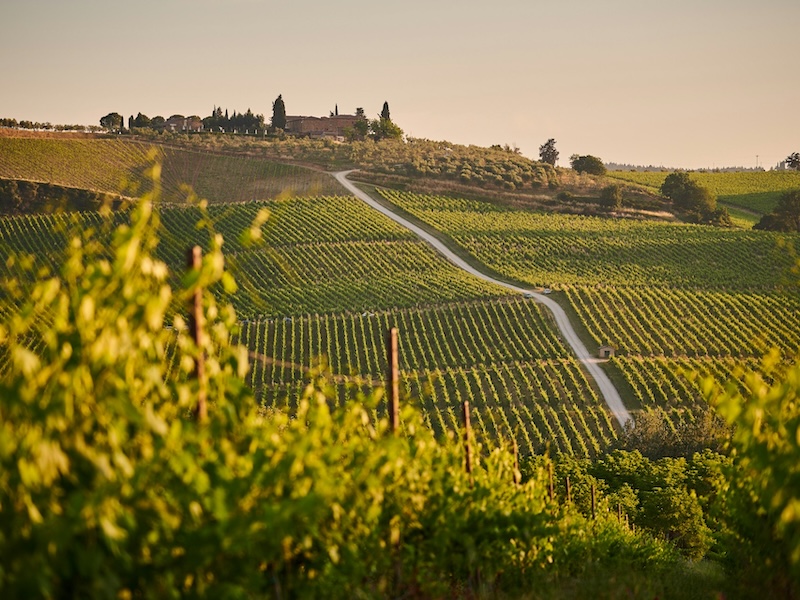
Chianti Region
A circular route from Siena through the Chianti Region provides visitors to Tuscany with a wonderfully scenic and sensory travel experience. The route covers the villages of the Ch…
Chianti Region
A circular route from Siena through the Chianti Region provides visitors to Tuscany with a wonderfully scenic and sensory travel experience. The route covers the villages of the Chianti Classico wine region, which are garnished with ancient castles and rambling farmhouses. The vineyards and wooded hills are best explored along the winding back roads or from within the sleepy hamlets.
The first stop is at Castello di Brolio, a magnificent vineyard owned by the Ricasoli family since 1167. The SS484 will go south of Brolio and north past the hamlets of San Gusme, Campi and Linari, before a diversion to the Meleto Castle. Another worthwhile stop is at Badia a Coltibuono, for its restaurant and Romanesque church.
The winding road west to Radda, in Chianti, is especially picturesque. A further nine miles (15km) from here is the delightful hamlet of Volapia and Castellina. Within the ramparts of this walled village is the Bottega del Vino Galla Nero, at Via della Rocca 13, which showcases the region's delectable wines and olive oils.
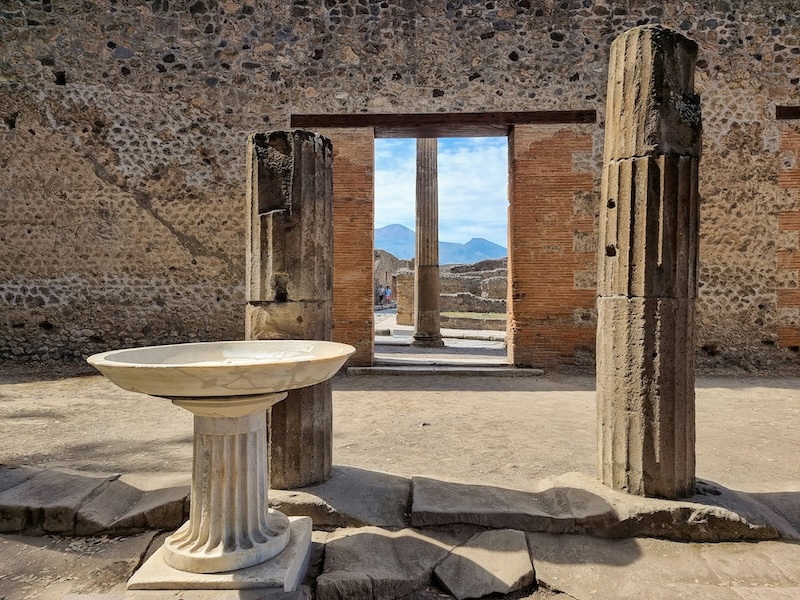
Pompeii
Mount Vesuvius erupted in the year 79 AD, burying the Roman city of Pompeii in volcanic lava and ash. The most evocative testimony to its victims is the 'frozen people', calcified …
Pompeii
Mount Vesuvius erupted in the year 79 AD, burying the Roman city of Pompeii in volcanic lava and ash. The most evocative testimony to its victims is the 'frozen people', calcified remains whose anguished contortions and facial expressions reveal the horror of their untimely deaths. Pompeii is one of Italy's most popular tourist attractions, seeing nearly 2.5 million visitors every year. It's one of the most intriguing sites of the ancient world and a full day of walking barely covers the many sites of interest. Pompeii is truly an unmissable attraction, along with the four associated sites of Herculaneum, Oplontis, Stabia and Boscoreale.
Website www.pompeiisites.org
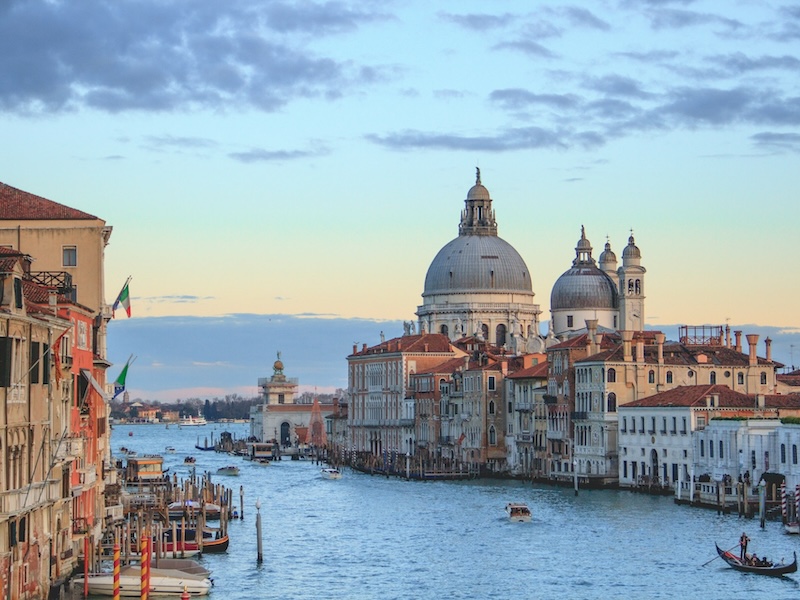
The Grand Canal (Canalazzo)
The Grand Canal is a hub of activity in Venice, encircled by the elegant facades of the palazzi testifying to the city's past opulence. The best way to explore the architectural sp…
The Grand Canal (Canalazzo)
The Grand Canal is a hub of activity in Venice, encircled by the elegant facades of the palazzi testifying to the city's past opulence. The best way to explore the architectural splendour of these Renaissance buildings is on board a vaporetto. Although a gondola ride along the Grand Canal is glorious, it is often better to explore the smaller waterways by gondola, as the Grand Canal can become crowded and stressful in peak season.
Palaces and buildings to look out for include the Ca da Mosto; the House of Gold; and Palazzo Corner-Spinelli and Palazzo Vendramin Calergi, which combine classical and Byzantine elements. Architect Jacopo Sansovino was inspired by Codussi's style and infused this in his creation of the Palazzo Corner (Ca Granda).
Another notable Palazzo is the Grimani di San Luca, designed by Michele Sanmicheli. Pedestrian access across the canal is only provided along three bridges situated at the station, Rialto and Academia.
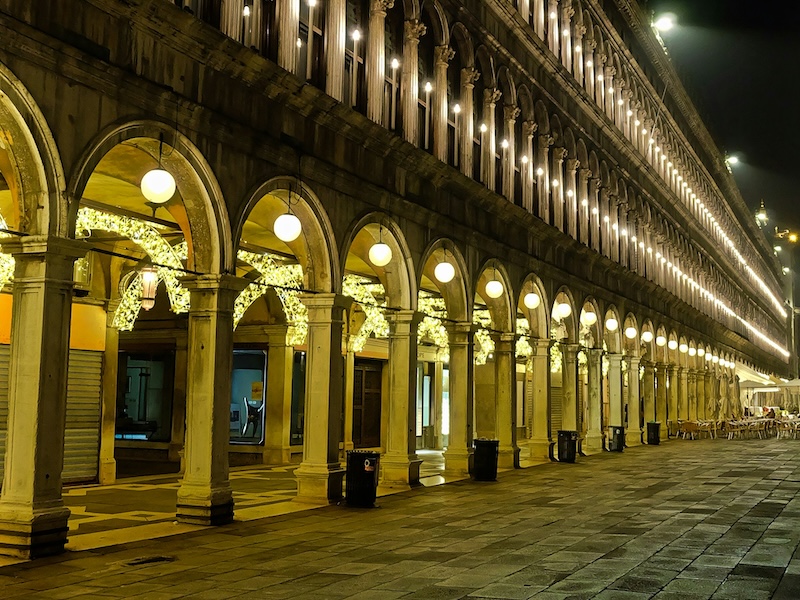
St Mark's Square
The city's first citadel and church were erected on the Piazza San Marco: the Palazzo Ducale and the Basilica di San Marco, respectively. The latter is a unique juxtaposition of By…
St Mark's Square
The city's first citadel and church were erected on the Piazza San Marco: the Palazzo Ducale and the Basilica di San Marco, respectively. The latter is a unique juxtaposition of Byzantine, western European and Islamic architectural styles. Its most precious relic is the Pala d'Oro, a Venetian-Byzantine gold relief adorned with precious gems.
Tourists pay dearly to eat or drink at the elegant cafes that spill onto the Piazza. Designer shops line the streets radiating from the square, and there are other worthwhile places such as Museo Correr, the Archaeological Museum and the Museo del Risorgimento, housed within the Procuratie Nuova. Attached to the Procuratie Vecchie is the Torre dell'Orologio, its adjoining archway guiding one through to the Mercerie, Venice's main commercial street stretching to the famous Rialto Bridge.
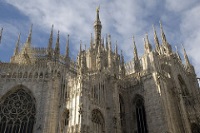
Duomo di Milano (Milan Cathedral)
One of the world's largest Gothic cathedrals, the Duomo presides over the Milanese Piazza bearing its name. Construction began in 1386 and continued sporadically until Napoleon ord…
Duomo di Milano (Milan Cathedral)
One of the world's largest Gothic cathedrals, the Duomo presides over the Milanese Piazza bearing its name. Construction began in 1386 and continued sporadically until Napoleon ordered its completion in 1809. Its lengthy creation bestowed on it 3,400 statues, 135 spires and 96 gargoyles, as well as a colourful mosaic of stained glass windows.
The 16th-century marble tomb of Giacomo de Medici lies in the southern transept, and lying buried at its heart is St Charles Borromeo, the cathedral's most important benefactor. Every year in May and September, a nail from the cross of Christ is displayed to worshippers, retrieved from its resting-place by the bishop who is hoisted to the nivola to reach it. Across the piazza are the Museo del Duomo, displaying the treasures from the cathedral, and the Museo d'Arte Contemporanea, showcasing Italian Futurist art.
Website www.duomomilano.it/en/
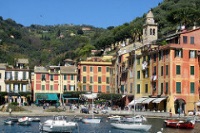
Portofino
Nestled in a sheltered inlet within the stretch of the Italian Mediterranean is the coastal resort village of Portofino, famous for its picturesque harbour. It has long been the pl…
Portofino
Nestled in a sheltered inlet within the stretch of the Italian Mediterranean is the coastal resort village of Portofino, famous for its picturesque harbour. It has long been the playground for the rich and famous, attracting the likes of Sophia Loren, Elizabeth Taylor and Grace Kelly. The scenic surrounds can be explored from the outlying nature reserve, which is graced with cypress and olive slopes. Travellers can set off from here on a 90-minute trek to San Fruttuoso, or a two-and-a-half hour hike to Santa Margherita. Other sights around Portofino include its castle and the lighthouse, with its breathtaking view of the coastline. The most famous beach in the area is the beautiful Paraggi Beach, with nearby alternatives including Camogli, Chiavari, Lavagna, and Sestri Levante.
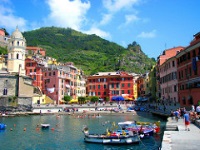
Cinque Terre
Strung along just over 11 miles (18km) of rugged cliffs between Levanto and La Spezia, the five fishing villages of the UNESCO-listed Cinque Terre nestle precariously on the cliffs…
Cinque Terre
Strung along just over 11 miles (18km) of rugged cliffs between Levanto and La Spezia, the five fishing villages of the UNESCO-listed Cinque Terre nestle precariously on the cliffs. Overlooking the azure ocean of the Italian Riviera, it's a picture-perfect dream of sparkling clear waters and dramatic vistas, contained within the tranquil embrace of the villages that are connected to one another by a scenic pathway that curves through the hillside among olive groves and vineyards. Monterosso is the largest and is recognisable through the huge statues carved into the shore's rocks. The village of Riomaggiore is identified through the myriad fishing boats festooning its shores, linked by the 'lovers lane' to the charming town of Manarola. Corniglia perches on the mountainside and is accessed through a steep climb, while Vernazza's promenade and piazza have beautiful sea vistas.
Website www.cinqueterre.com
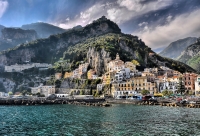
Amalfi
The town of Amalfi sits elegantly against a backdrop of steep cliffs and thickets of lemon trees. Terraced buildings climb down to the shoreline, their pastel hues enhancing the fa…
Amalfi
The town of Amalfi sits elegantly against a backdrop of steep cliffs and thickets of lemon trees. Terraced buildings climb down to the shoreline, their pastel hues enhancing the fairytale allure of this Italian seaside retreat. Amalfi was once one of the great maritime republics that thrived off trade and rivalries with Pisa, Genoa and Venice. The 9th-century Amalfi Cathedral is a breathtaking example of Arab-Norman Romanesque architecture, while museums include the fascinating Museo della Carta and the Arsenal of the Maritime Republic.
The Piazza del Duomo is the main hub, and is dotted with cafes, gorgeous boutiques and romantic restaurants. A promenade allows visitors to gaze over the picturesque marina and beyond to the memorable emerald waters. The main beach is the sheltered Marina Grande, with sandier beaches found at the villages of Minori and Maiori.
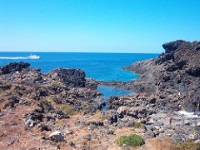
Ustica
An underwater city and a landscape of petrified black lava are the characteristics of the unusual little island of Ustica, which is just a short ferry ride from Palermo. The ancien…
Ustica
An underwater city and a landscape of petrified black lava are the characteristics of the unusual little island of Ustica, which is just a short ferry ride from Palermo. The ancient volcanic island was once inhabited by the Phoenicians and often fell prey to pirate raids during the Middle Ages. There are many shipwrecks off the island and the Greeks believed it was inhabited by sirens that lured ships to their doom on the rocks.
The Greeks, Carthaginians and Romans all left their mark on the landscape too. Today, the island is a designated national marine park and its crystal-clear waters and undersea treasures, particularly the submerged ancient city of Osteodes, attract divers from all over the world. The snorkelling is also brilliant, as the waters around the island teem with marine life.

Mount Etna
Sicily's greatest natural attraction is Mount Etna, an active volcano which has been spewing lava and shaking the earth for centuries. The craters below the summit can be reached f…
Mount Etna
Sicily's greatest natural attraction is Mount Etna, an active volcano which has been spewing lava and shaking the earth for centuries. The craters below the summit can be reached from the town of Piano Provenzana at the base by bus or on foot. This town also serves as a ski resort in winter, while summer sees it shift into a base camp for hikers intent on enjoying the wooded scenery and exploring the area's interesting caverns. Various species of oak, pine and birch grow over the lower mountain slopes; toads, tortoises and lizards hide in the forest streams. Foxes, weasels and other small mammals stalk the forests, and a plethora of bird species fill the trees and the Gurrida Lake area.
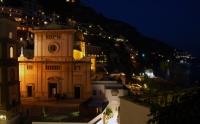
Positano
Positano retains the authentic character that endeared it to artists and writers such as Picasso, Escher and Steinbeck. Pastel-coloured houses and bougainvillea-draped hotels are c…
Positano
Positano retains the authentic character that endeared it to artists and writers such as Picasso, Escher and Steinbeck. Pastel-coloured houses and bougainvillea-draped hotels are connected by steep roads and steps to a boat-filled harbour below. In the town centre is the cobbled Flavio Gioia Square, which is surrounded by boutiques, bars and restaurants. Rising above is the 11th-century Basilica di Santa Maria Assunta, with its beautiful golden dome. There are two main beaches in Positano. Just below the town centre, Spiaggia Grande's expanse of dark sand is packed with deckchairs and sunbathers, while Spiaggia del Fornillo is a ten-minute stroll from the centre. There are also lovely hiking trails found in the surrounding Monti Lattari mountain range. Sorrento and Amalfi are short drives away, and there is a daily ferry to Capri from the harbour.
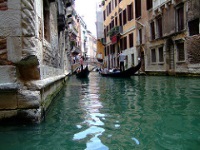
Gondola Rides
Surely one of Italy's most iconic images is that of gondolas being oared through the narrow canals of Venice by stripe-shirted, serenading gondoliers. These flat-bottomed boats are…
Gondola Rides
Surely one of Italy's most iconic images is that of gondolas being oared through the narrow canals of Venice by stripe-shirted, serenading gondoliers. These flat-bottomed boats are unique to the canals and waterways of Venice, meaning it's an obligatory tourist activity.
Although expensive, a gondola ride in Venice is sure to leave visitors with a warm and lasting memory of their holiday in Italy. Tourists are encouraged to make the most of the investment by taking a trip down the back canals of Venice and not the Grand Canal, as it's too crowded and impersonal. Travellers can pick an ornately-carved gondola, with a comfortable seat and blankets if it's cold.


